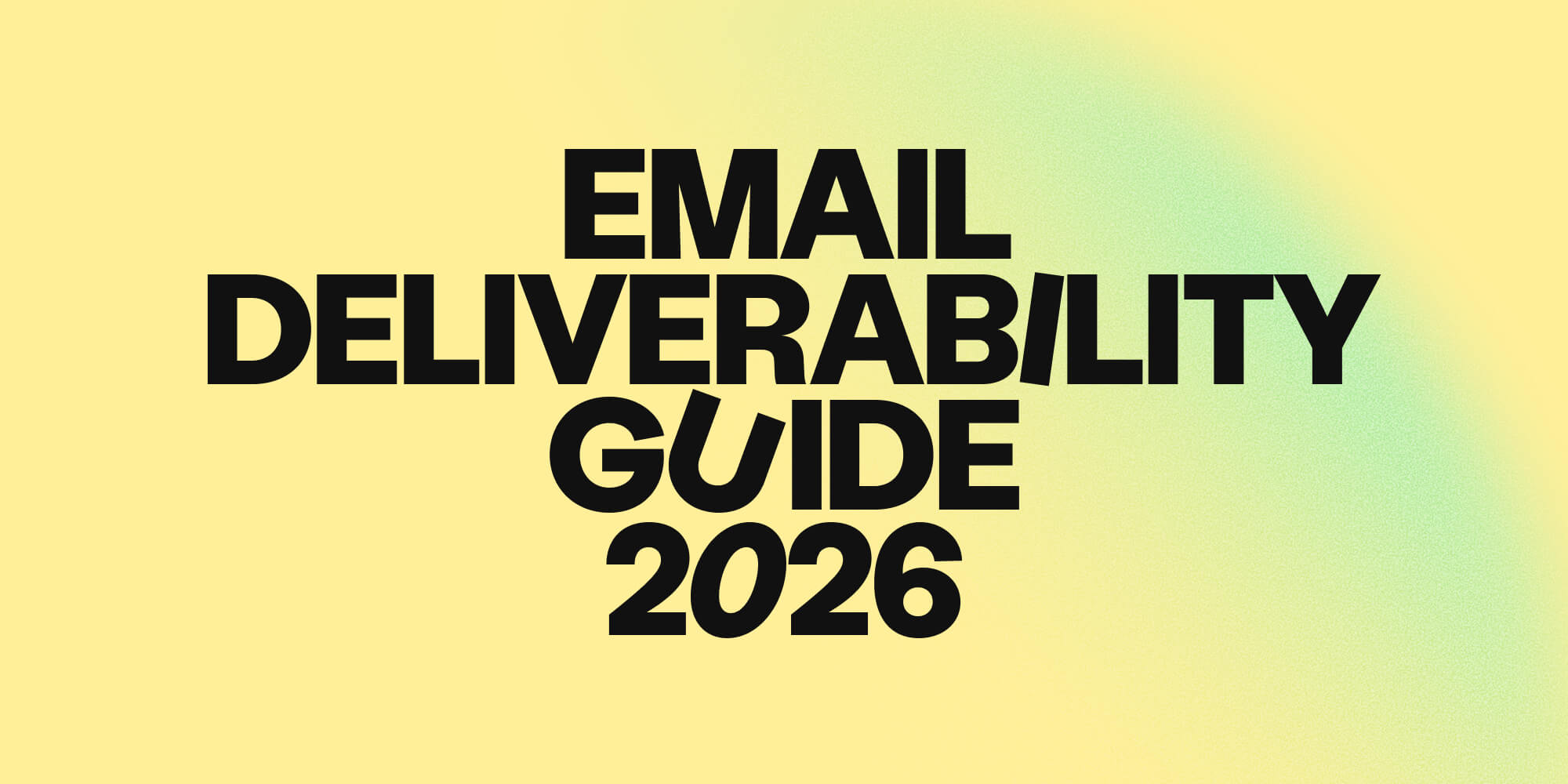Objection handling 101 - 10 examples for B2B sales
•
January 12, 2023
.jpg)
You’ve researched your prospect, you’ve nailed the cold outreach, and you’ve even sent a nice personalized follow-up. You’re hoping your lead qualification has set you up for success - and then you hit an objection.
After all your hard work, and with the pressure of quotas or bonuses added into the mix, it can be difficult not to take an objection personally. Was it something you did? Something you didn’t do? Most importantly: what are you supposed to do now?
Objections are an inevitable part of sales, B2B or otherwise. They’re always going to happen. But what isn’t set in stone is how you choose to deal with them, and whether you turn them into an opportunity. In this blog post we’ll not only show you some common sales objections and how to respond to them; we’ll also explain why objection handling is so important in B2B sales and how it can become your key to building better customer relationships.
What is a sales objection?
It’s not always a flat-out “no”.
A sales objection is any concern raised by the prospect that indicates they’re not yet ready to close the deal. Whether it’s because of internal indecision or they found something in your pitch lacking, it’s up to you to get to the bottom of their concerns and figure out how you can help. This is known as objection handling.
Of course, there is a difference between a temporary sales objection and an outright rejection, so it’s important to know when to walk away and leave your prospect in peace.
Types of objection in B2B sales
Although every business will have its own unique decision-making structures and individuals, objections tend to fall into four common categories. These are Budget, Authority, Need, and Timing, collectively known as BANT:
- Budget
At the back of every buyer’s mind is the prospect of financial risk. It’s your job as a sales rep to convince them your product or service’s rewards outweigh the risks by providing them with realistic projections and demonstrating its value.
- Authority
The question of trust is likely to arise early in your conversations. If your prospect was an inbound lead, they’re more likely to have some sense of awareness or interest towards your company. This generally makes it easier for you to nurture their trust than if you approached them through cold outbound lead generation. In the latter case, it’s crucial you explain the authority of your brand in the market so they don’t question why they haven’t heard of you before.
- Need
Your prospect might think they don’t need your product or service, but it might just be that they don’t fully understand what you can offer. This is an opportunity to let them do the talking: use open-ended questions and ask them what their ideal solution would look like to get a sense of where you can fit in.
- Timing
In some cases, “not the right time” might indeed be a polite way of saying “no”. Again, you can try asking them to elaborate further to see what’s on their agenda and whether they’d be willing to catch up in the future. Remember to emphasize how your solution can tackle their specific pain points to remind them why they should prioritize this purchase.
How to handle objections in B2B sales: A framework
No matter how frustrating an objection might be, it’s crucial to stay calm. Instead of going with a knee-jerk response, try abiding by this general strategy to help you decide on your next steps:
- Practice active listening
Make sure you’re really listening to your prospect’s concerns and not just waiting to respond. Try not to jump to conclusions or react defensively - instead, give them space to speak and repeat back what you’ve heard to ensure you’re on the same page. A little empathy goes a long way here, especially if they were expecting you to react negatively!
- Understand
It could be the case that your prospect isn’t being 100% straight about their primary concern. Ask them to elucidate as much as possible and be sympathetic; they’ll be more encouraged to open up if they feel their concerns are being respected.
Don’t forget the final “Is there anything else?” question. If you’ve built a rapport through the conversation, this could be the moment they tell you what’s really bothering them.
- Respond
Before you hit back, make it clear that you understand their viewpoint and consider their concerns valid. As you respond, ensure you’re confronting their concerns head-on to show you deserve their confidence. If you’re able to resolve the issues there and then, do so, or else provide a clear timeframe if you need to escalate a query.
You can prepare yourself for some common objections by taking a look at our examples below.
- Confirm
Having provided a sympathetic, confident, and concise response, you’ll need to check whether your prospect is happy with your answers. They may well ask for more time to deliberate, in which case it’s important you schedule a follow-up so you can keep the process on track. In the meantime, try to sign off on a positive note, making it clear that you’re available to answer any further questions they might think of.
Like everything in sales, you’ll become better at handling objections as you get to know your ICP inside out. And the more you learn to anticipate potential objections, the more you can head them offearly on!
Understanding the importance of handling objections in B2B sales
In today’s B2B sales environment, where you’re fighting countless other competitors for your prospect’s attention, building meaningful and mutually-beneficial relationships is the key to long-term success.
Being able to handle objections in the B2B sales environment doesn’t just unlock more revenue in the short-term; it can also bolster your customer’s confidence in the long run because they know you understand and respect their needs. Objections or no objections; if you can make a great first impression on handling their first purchase, they’ll know they can rely on you when they need support in the future.
Examples of objection handling in sales
1. “It’s too expensive.”
“I understand your budgeting concerns. Perhaps I can unpack how [product] can help with [pain point] we discussed and how it could benefit your ROI in the long-term.”
2. “We have other budgetary priorities right now.”
“We worked with another customer in a similar situation, but by purchasing [product/service] they managed to increase their ROI and free-up spending elsewhere. I’d be happy to share their case study if you’d like to learn more.”
3. “I can get it cheaper with [competitor].”
“Could you tell me more about what [competitor] offers? Are there any differences with our product? It would be great to know what you would consider best value when it comes to solving [pain-point].”
4. “We’re already using [competitor] and are very happy.”
“Fair enough, that’s great! What are you particularly happy about when it comes to your relationship with [competitor] and their product? I’d be really interested to hear a bit more about your viewpoint and see how we compare.”
5. “I’ve never heard of [your company/product].”
“We’re a company that offers [description of your product or service], but what we’re especially known for is our [USP]. I’d love to speak to you about your current processes and see if we might be able to help.”
6. “I don’t see how [product/service] can help me.”
“Okay, maybe we can start with the challenges you’re facing right now? [Product/service] might offer a solution for you.”
7. “We’re pretty happy with things for now.”
“That’s good! May I ask how you’re currently tackling [pain point]?”
8. “I’m not sure how [product/service] would work with our current tools.”
"So which tools are you currently using? What do you most value them for? We have customers who’ve successfully integrated [product/service] with other tools.”
9. “We don’t want to get stuck in a contract.”
“I understand. I’m happy to run you through some different contract and payment options that might fit you to get started.”
10. “It’s not a priority right now.”
“Okay - may I ask what your current priorities are? What are your biggest challenges at the moment?”
If you're handling objections on the phone, you can improve your sales techniques by understanding the key differences of cold calling vs warm calling. This will help you know how to adapt your pitch depending on where the prospect is in your sales funnel.
The role of objection handlers in the sales process
Being an objection handler doesn't mean you're just a fire-fighter. You're still a strategic player actively shaping the sales narrative and can actually turn challenges from prospects to your advantage.
- Integral part of the sales strategy: Instead of dreading objections, you should proactively approach them in your sales strategy. By anticipating potential objections, sales teams can prepare tailored responses that align with the customer’s needs and concerns.
- Building trust and credibility: A skilled objection handler knows that each objection is an opportunity to deepen the prospect's trust. By addressing concerns head-on, sales professionals demonstrate their commitment to understanding and solving the prospect's problems.
- Facilitating informed decision-making: Handling objections effectively helps prospects make informed decisions. By clarifying misconceptions and providing additional information, sales reps guide prospects through the decision-making process, increasing the likelihood of a sale - and, equally, decreasing the time you waste on unqualified leads.
Tips for successfully handling sales objections
Navigating objections in sales can be challenging, but with the right techniques, you can turn potential setbacks into opportunities. Here's how:
- Leverage the objection handling framework above: Implement an objection handling framework that includes identifying the objection, understanding its root cause, and responding appropriately. Each objection should be tackled uniquely based on its nature and the prospect's specific concerns.
- Ask probing questions: Sometimes, handling sales objections involves digging deeper. Ask open-ended questions to get to the heart of the objection. This helps in understanding the real issue and tailoring your response accordingly.
- Provide clear, concise responses: When handling objections, clarity is key. Respond with concise and direct answers that address the prospect's concerns. Avoid overloading with information that may lead to further confusion.
- Use examples and stories: Share stories of how your product or service has helped similar customers. This not only addresses the objection but also provides social proof.
- Follow-up and persist: Post-objection handling, follow up with your prospects. This demonstrates your commitment to addressing their concerns and keeps the dialogue open for future opportunities.
- Keep learning and adapting: You won't win every sale, but be always open to feedback to your prospects so you can improve the buying experience for future opportunities.
Takeaway
The rule of thumb in objection handling? Try to keep the conversation flowing! The more you can keep your prospect talking, the more you can gauge whether you still have room to talk or whether you’re headed for an outright rejection. Keep your cool, play it right, and your objection handling might just become one of your greatest strengths.
A solid ICP and sound lead qualification can massively boost your chances of closing the deal. Check out these free resources to make sure you’re not missing anything:
- Prospecting & Lead Generation e-Book - A complete guide to defining your ICP and outbound lead generation.
- Book Summary: How To Win Friends and Influence People - An overview of the key social skills salespeople can learn from corporate legend Dale Carnegie.
Subscribe to Amplemarket Blog
Sales tips, email resources, marketing content, and more.










